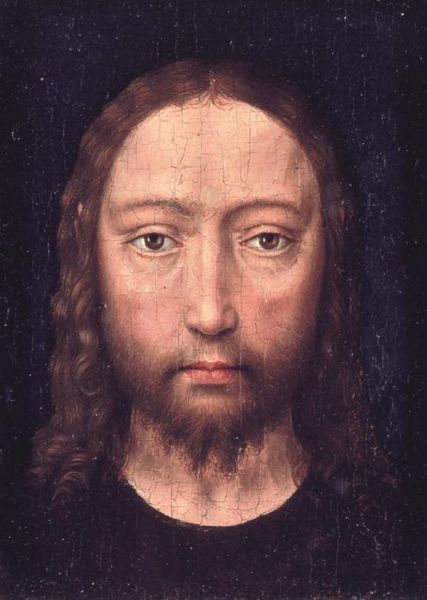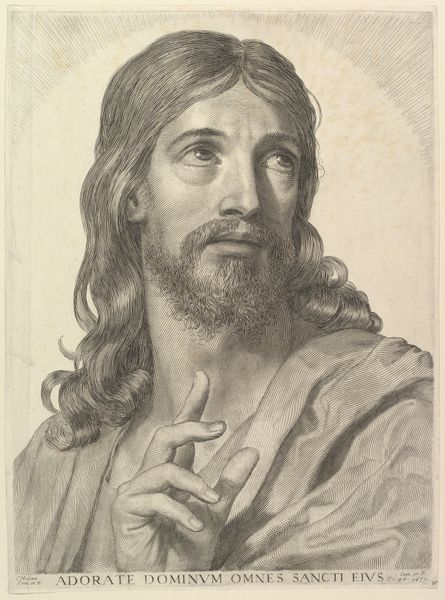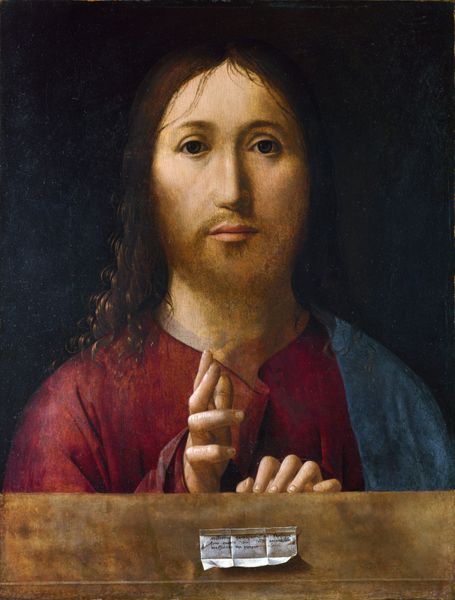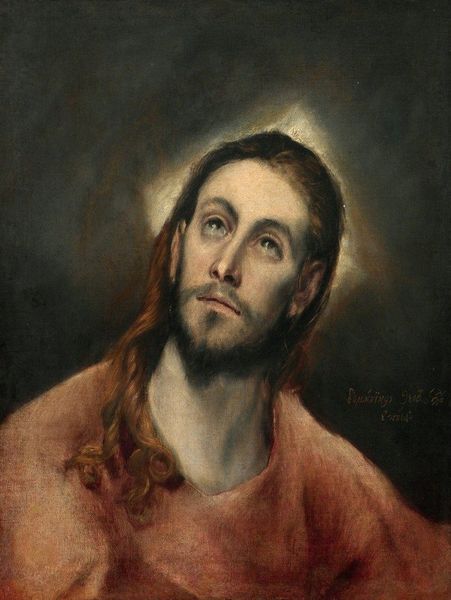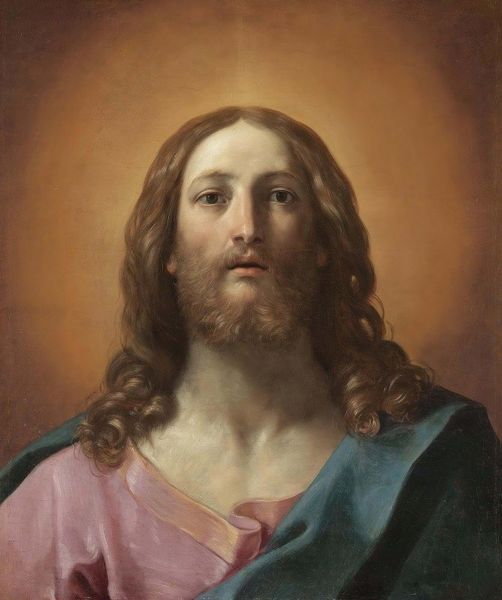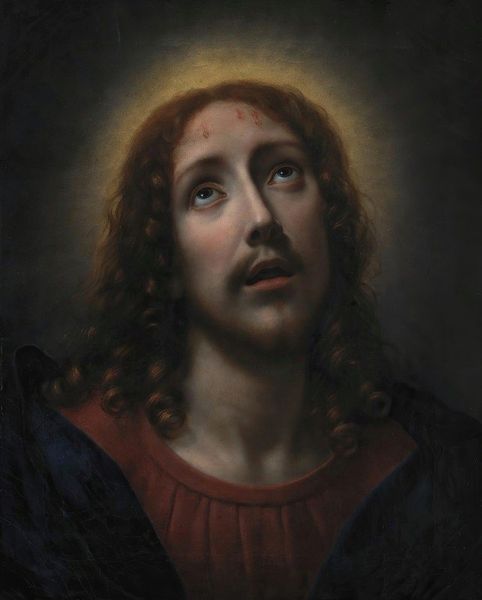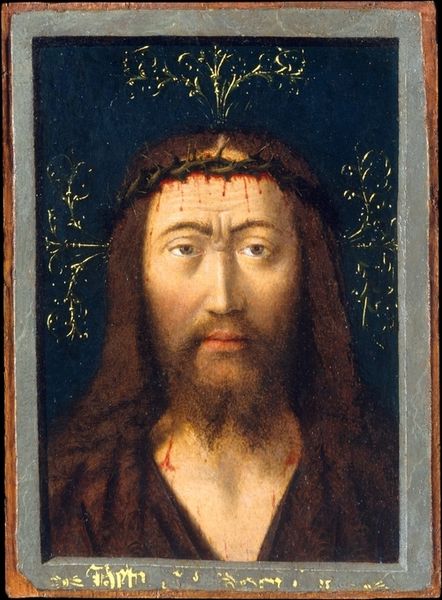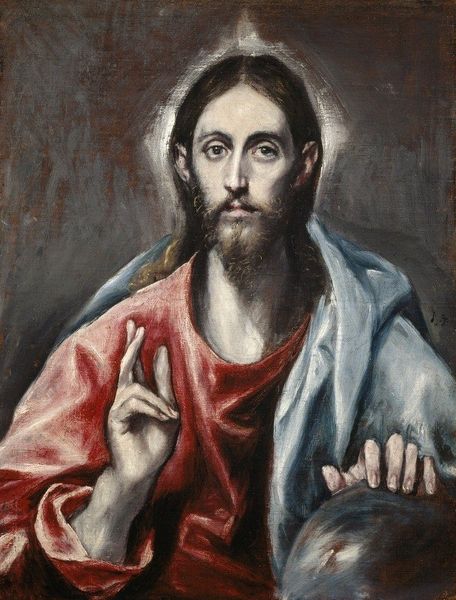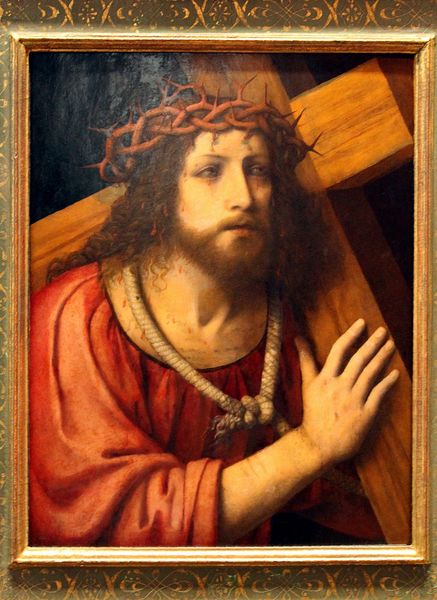
painting, oil-paint
#
portrait
#
painting
#
oil-paint
#
figuration
#
history-painting
#
early-renaissance
Copyright: Public domain
Curator: This is Quentin Matsys's "Christ," painted in 1529. You can find this piece here at the Met. Editor: He has kind eyes, doesn't he? But with such a direct gaze...it’s almost unsettlingly modern, I think. Curator: You're right, there's an undeniable intimacy in the portrayal. What is also striking is the subtle play between the holy, embodied in that halo of light, and a deeply grounded human form. Note, too, the Hebrew lettering embellishing the neckline—a delicate reminder of his Jewish heritage. Editor: It’s oil on wood panel, right? It’s fascinating to consider what that decision signifies. Wood, as a raw material, would have been widely accessible but it needed a skilled hand to turn it into a surface worthy of bearing an image of Christ. I'm also drawn to the economy of materials, just look at that limited color palette...blues, reds, and the natural tone of the wood gleaming through. Curator: A brilliant observation. Matsys was clearly aware of the symbolic resonance imbued in simple, locally-sourced materials. Think of the layers of craft: the preparation of the wood panel, the grinding of pigments, the delicate application of glazes. Editor: Exactly! We can’t divorce the image from the intense labor and the embodied knowledge that brought it into being. These processes give dignity to human experience and value that must be acknowledge when discussing this figure. Curator: I always felt a strong sense of yearning emanating from his depiction of Christ. He truly succeeded in portraying a relatable divinity. Editor: Absolutely, a divine figure embedded in material reality, inviting contemplation not only of the spiritual but also of the human condition, material practices, and the means of production. What a complex piece.
Comments
No comments
Be the first to comment and join the conversation on the ultimate creative platform.

